SHSU 'Rodeo Icon,' Texas Cowboy Hall Of Famer Reflects On Accomplishments, Service To Sport
Oct. 18, 2013
SHSU Media Contact: Marissa Nunez
Editor's note: SHSU's current cowboys and cowgirls will put Sikes's winning legacy into action Nov. 7-9 at the SHSU sponsored rodeo at the Lone Star Expo Center in Conroe.
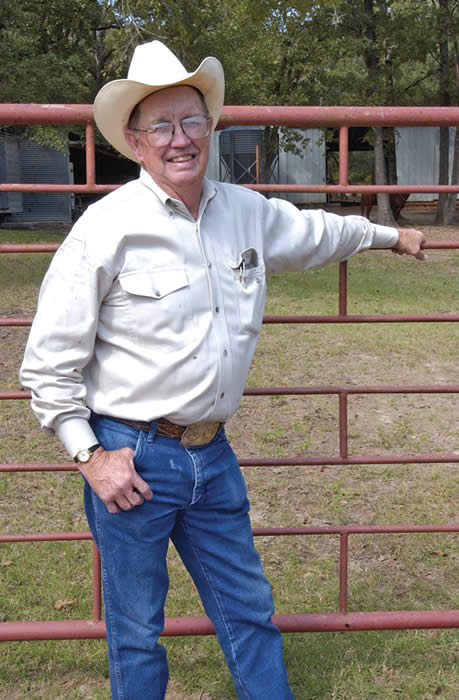
On the wall of Sam Houston State University alumnus L.N. “Sonny” Sikes’s home is a collage made up of black-and-white photographs of his siblings, nephews, in-laws and himself roping, surrounding a picture of his mother and father with the words “Sikes Family Legacy” printed across it.
Indeed, that is what the Sikes family has become in the world of rodeo—a legacy.
The sport of rodeo runs deep in the heart of the Sikes family and the name has become an institution in the rodeo world. Family members, both past and present, have become pioneers of the sport in their own right.
That legacy was honored in June, when the National Intercollegiate Rodeo Association established the L.N. “Sonny” Sikes Pioneer Scholarship Award. Senior interdisciplinary studies major Stormie Haynie received the first scholarship.
“I feel blessed to be chosen as the recipient, as Sonny is a role model in and out of the rodeo arena,” said Haynie. “He has impacted the sport by being a mentor and an icon for rodeo not only in Texas but all over the rodeo world. His winning attitude is contagious.”
Sikes has dedicated his life to rodeo, from competing to coaching. He won four national titles as a Bearkat and coached many champion cowboys and cowgirls while at SHSU. He has established scholarships, built arenas, and to this day remains active in the SHSU and rodeo worlds.
“If I had my life to live over, I don’t think I would change anything,” Sikes said. “Not too many people can say that.”
From Amateur to Pro
Sikes began his life-long rodeo career at the age of 4 with the help of his father, a calf-roper and professional horse trainer, while growing up in the small town of Mexia.
“My dad was a cowboy and he probably knew as much or more than 99 percent of the horse people today,” Sikes said. “He was great with people, too. I quote him nearly everyday.”
He said though his father was a cowboy, he never pushed rodeo on to his two siblings or him, but, like a lot of sons, Sikes wanted to follow in his father’s footsteps and become a calf-roper.
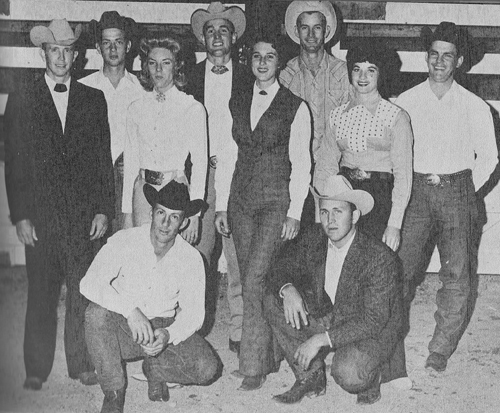 |
| After graduating from SHSU, Sikes (second row, far left, in black) came back to SHSU as a professor and coach of the SHSU rodeo team. His 1962 team was among the many Southern Regional NIRA champion teams he coached to victory. —From the 1962 Acalde |
He got his start roping competitively at the age of 11, when he participated in a calf-roping exhibition at the 1944 prison rodeo.
“You have to start somewhere,” said Sikes, who would go on to win the sportsmanship award at the first state high school rodeo finals, despite being in middle school.
All of the dedication and hard work he put forth in the beginning of his career started to pay off during his junior year of high school when he became the state calf-roping champion.
“Rodeo is no different from any other sport in that if you’re going to be great you have to be dedicated,” Sikes said. “I’d like to say I was, and my dad was responsible for that.”
By his senior year he was competing at the professional level, but due to an emergency appendectomy while competing in Gladewater, he had to miss that year’s state high school finals.
“Missing that rodeo hurt worse than the surgery did,” Sikes said.
After graduating in 1951, he originally planned to attend Stephen F. Austin but because he had a roommate back home he decided to come to SHSU instead.
“Thank goodness I didn’t go there,” Sikes said. “I also looked at Texas A&M, but they haven’t made an Aggie out of me yet.”
During his time as a Bearkat, Sikes roped in four national calf-roping championship titles, taking home both individual and team titles during the 1955 finals. He was the only roper to ever do that within the same year.
He also received a coveted spot on the first NIRA championship team.
“I had a very rewarding college rodeo career. I’m thankful for everything,” he said.
He graduated from SHSU in 1955 with a bachelor’s degree in agricultural education and two years later received his master’s degree.
He began teaching grade school as a playground supervisor and a girls P.E. teacher back in his hometown, but realized it was not what he wanted for a career.
At the time, Sikes was also a part-time professional calf-roper and knew he only had so many years left to compete and be successful because of the toll rodeoing takes on the body—but he just wasn’t ready to “quit living.”
“I went to then president Harmon Lowman’s office and said to him, ‘the rodeo program is doing good, I’d like to see it keep going, and if you’ll hire me I don’t care what title you give me, just pay me enough to live on,’” Sikes said.
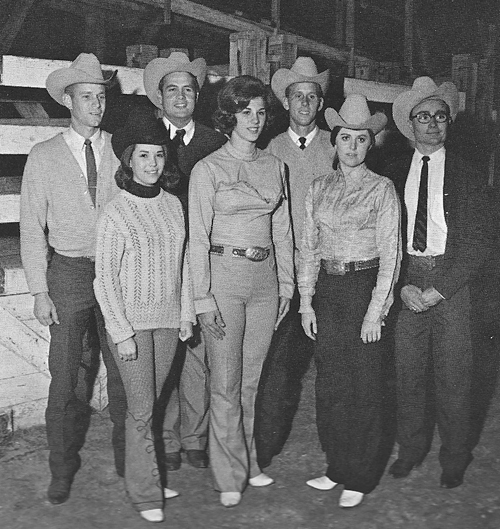 |
| PAST & PRESENT: The 1968-69 team was among the many cowgirls and cowboys who came together to celebrate the winning tradition of the rodeo program at SHSU (including the 1968 men's team championship and women's team reserve championship) when the agricultural and industrial sciences hosted the Rodeo Reunion in 2011. —Top photo from the 1969 Acalde, bottom by Brian Blalock |
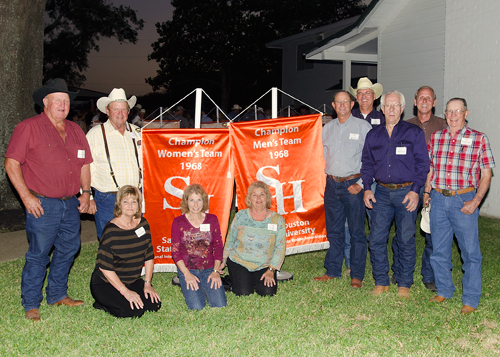 |
And Lowman did. During his first year, Sikes taught freshman horse classes, which he said was pretty serious, and that it took some time before he became confident as a teacher. It was during the same year that he also became the coach for the SHSU rodeo team.
For him, this was the perfect job because it allowed for him to be remain active in rodeo and be able to teach it to future generations of young cowboys and cowgirls.
“Rodeo has been my life. It’s my livelihood, my everything, and I guess anybody with a burning desire to do a certain thing will do it, so this fit perfectly,” he said.
Under his leadership, the SHSU rodeo team captured eight national team titles, along with many individual championships. He also founded the SHSU Rodeo Club, one of the oldest and most well known in the country, and established the SHSU Rodeo Alumni Association, which provides scholarships to current and incoming agriculture students.
Yet, after all the national titles and awards he has received, he considers the most rewarding thing about that time as being able to watch the students progress both inside the arena and in the classroom.
“I helped get a lot of guys an education who didn’t intend on getting one, and even after 25 years they still come back and thank me,” Sikes said. “To know you made an impression on them that they can remember years later is very rewarding.”
After 40 years teaching and coaching, Sikes finally hung up his hat and retired in 1997, but that didn’t stop him from being a cowboy. He continued to work with the rodeo program and established the Sikes Family Endowed Scholarship, which is given to students competing in rodeo.
“I bleed orange and Sam Houston has been super to me, so I try to give back a little bit of what they gave me,” Sikes said.
Finding his 'Roping Partner'
Throughout his career, there has been one person who has been with him from the very beginning, his No. 1 fan and high school sweetheart Joanne.
“She was a challenge to me; took me four years to catch her,” Sikes said with a laugh.
He met Joanne when he was a junior and she was a freshman, and after coming to college, he would hitchhike from Huntsville back home to Mexia every Friday to take Joanne to the football game and then hitchhike back late at night in order to make Saturday classes the next morning.
“There’s no telling how many thousands of miles I hitchhiked between here and there,” Sikes said.
One weekend, in particular, he said he will never forget. He was scheduled to rope in the Texas Prison Rodeo one Sunday and had to register by noon in order to compete but had no way of making it back to Huntsville.
“I got in the car right at 10 o’clock and told the driver ‘man I really wish I could get to Huntsville by noon; I’m roping in the rodeo,’” said Sikes. “He took me straight to the back of the prison stadium and I got there with about five minutes to spare and entered. I actually ended up winning a lot of money at that rodeo.”
He said he had competed so many times at the prison rodeo he even had his own cheering section of inmates, calling to him, “Get the money, Mr. Sonny.”
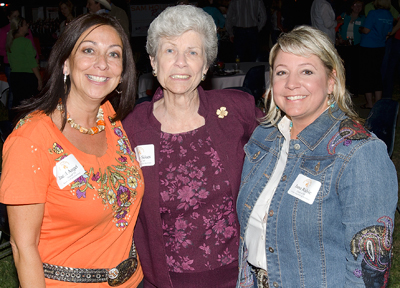 |
| CARRYING ON THE LEGACY: The Sikes legacy lives on in both the NIRA and the SHSU Rodeo Team. Sikes attributes a big part of his success to high high school sweetheart Joanne (above, center), who is a previous Southern Region Rodeo secretary. With Joanne are current secretary Jacel Angel (left) and past secretary Jana Ritchie. The two also contribute regularly to the SHSU rodeo team (below, Sikes is fourth from the left on the back row), both through scholarship and mentorship. —Photo by Brian Blalock, submitted photo below |
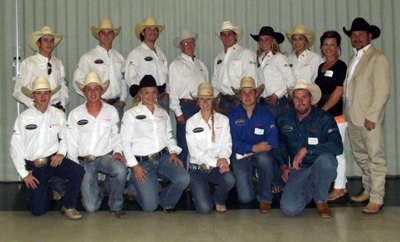 |
After the couple married in 1954, Joanne finally got her first glimpse of rodeo life, when the two drove 36 hours non-stop to Salt Lake City.
For her, this was her initiation into the rodeo world.
“That first trip, we were gone six weeks, border to border, and she took enough clothes to last her a year,” Sikes said. “I know she didn’t wear a fourth of them.”
Joanne admits that rodeo never really interested her, but she still supported Sikes in everything he did both inside and outside of the arena.
During his first year teaching at SHSU, she would stay up late to help him prepare lesson plans and course work. When Sikes became the executive secretary of the NIRA in 1961, Joanne ran the office and produced a monthly newsletter.
She recalled how before the convenience of technology, she and a few friends would spend hours printing copies for more than 3,000 NIRA members in their home.
“You had to cut a stencil for every page and run it on this drum of ink and it would make copies,” Joanne said. “After that, we would put them out on the table and assemble them by walking around and picking up a page at a time. It was fun.”
Under the Sikes' leadership the NIRA exploded from a $75,000 production to the multi-million dollar production it is today, with more than 135 colleges and universities spanning across 11 regions.
“It is now where I use to dream of it being. It is a really great production today,” Sikes said.
The two have seen and been through a lot in their 58 years of marriage, from non-stop, cross-country traveling and competing in numerous rodeos, to single-handedly running the NIRA.
“We’ve been through a lot together, but it’s been wonderful,” Joanne said.
They still remain active within the rodeo and SHSU community through their scholarships, and even give roping lessons to local cowboys and cowgirls.
Sikes’s contributions have been recognized by the Texas State University System Board of Regents, which honored him with the adoption of a resolution of recognition in his name. In 1999 he was named a “Distinguished Alumnus” by SHSU’s Alumni Association and was also inducted into the Texas Rodeo Cowboy Hall of Fame for the contributions he has made to the sport that has given him so much.
“I think I am really and truly the luckiest guy to have ever lived,” Sikes said.
“You really are,” Joanne said.
- END -
This page maintained by SHSU's Communications Office
Associate Director: Julia May
Manager: Jennifer Gauntt
Located in the 115 Administration Building
Telephone: 936.294.1836; Fax: 936.294.1834
Please send comments, corrections, news tips to Today@Sam.edu.

 SamWeb
SamWeb My Sam
My Sam E-mail
E-mail

